Please login or click here to join.
Forgot Password? Click Here to reset pasword
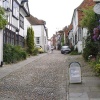 | 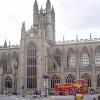 | 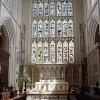 | 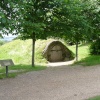 | 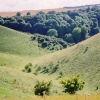 | 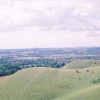 |
| Dave John Posts: 22335 Joined: 27th Feb 2011 Location: England | quotePosted at 10:36 on 7th April 2015 On 7th April 2015 09:13, Rod Burkey wrote:
I do think the debate on RAW is basically between new and old photographers. Those new to digital who do not understand what we older 'film' photographers had to do in darkrooms to produce a suitable image. Nowadays you can look at the screen on your camera and see on the spot if you have an image worth working with and if necessary take a few more to make any immediate adjustments, which is good I have to say as it saves a lot of time and heartache not to mention money if you have to go back to redo something important. Whereas we older folk who were brought up on film had no idea what we had secured until we had spent hours developing and processing the films and prints in a darkroom. People often say they have not got the time to sit in front of a computer and slide a few buttons but it is a damn site quicker than D&P in a darkroom. I would urge everyone who has RAW capability in their camera, which is the vast majority now, to give it a go. You will be truly amazed at the difference you can make to an image simply with a bit of contrast control or a touch of dodging and burning. Again absolutely nothing there that we did not have to do with film. At the end of the day the JPEG image you download from camera is set to certain parameters that each camera manufacturer decides for you. And each manufacturer has a slightly different formula to the rest for achieving that result. Give RAW a chance and amaze yourselves
|
| Edward Lever Posts: 734 Joined: 22nd Dec 2005 Location: UK | quotePosted at 10:52 on 7th April 2015 It is certainly true that shooting in RAW gives a lot more flexibility for later processing of the image. However, it is still necessary to be vigilant to avoid blown highlights (or 'clipping' in digital terms). Once an image has been taken, it is impossible to recover information from beyond the digital maximum value (255 for an 8-bit image such as jpg). Clipping can just as easily happen with RAW, even though there are more bits to play with, there is still an end-stop beyond which information is lost. The only way to avoid this effect is to make use of the exposure histogram function on the camera and to take notice of the 'flashing highlights' warning to manually compensate the exposure setting. |
| Dave John Posts: 22335 Joined: 27th Feb 2011 Location: England | quotePosted at 12:42 on 7th April 2015 More very good and vaild information there from Edward. The histogram is a great help to assessing exposure in the final image but is not the easiest of things to understand and may take a while for the newcomer to get to grips with. Not an easy subject to explain here but plenty of 'on-line' advice from the photo magazine sites etc. But basically you are looking for a graph that touches both sides of the grid with no major ups or downs which would indicate possible clipping. Most camera have various options for previewing an image and the most useful is the one that notonly shows the histogram but also, as noted by Edward above, show an image where potential blown highlights are shown as flashing over the affected area. Clipping occurs when the exposure range exceeds the physical capabilities of what rthe sensor is able to record and results in both highlights and shadows with no detail recorded. HDR (High Definition Range) processing can help this but is not the easiest process to get right but that is probably something for another hread maybe. Also a process that I have not pursued to any great degree. |
rustyruth Posts: 18773 Joined: 23rd Oct 2012 Location: England | quotePosted at 16:44 on 7th April 2015 I've never shot anything in RAW because I've never been able to up until now, and prior reading the explanations on this thread I didn't really understand it, thank you all. I shall certainly give it a go. I know I can view and edit RAW files on my laptop, but it seems with the purchase of a relatively cheap app I can do the same on my iPad which is very handy. This is going on my ever increasing list of things to try (and learn) |
| Dave John Posts: 22335 Joined: 27th Feb 2011 Location: England | quotePosted at 16:51 on 7th April 2015 Well don't forget, ask any questions, daft as they may seem to you, as I am sure between us we will be able to sort you out |
rustyruth Posts: 18773 Joined: 23rd Oct 2012 Location: England | quotePosted at 17:47 on 7th April 2015 Thanks Dave, a great help as always, it's much appreciated. The true spirit of POE. |
| Edward Lever Posts: 734 Joined: 22nd Dec 2005 Location: UK | quotePosted at 21:13 on 7th April 2015 Generally, an unprocessed RAW image will look less sharp and less vivid than the in-camera processed JPG of the same scene. This will often discourage a novice from dabbling further, which is a pity, because there are many benefits in using RAW, most of which have been covered in detail already . For me, the option of applying a more subtle sharpening effect than is possible with the in-camera algorithm is the main attraction of RAW. The use of the 'unsharp mask' is particularly useful, and is far more versatile than the simpler JPG sharpening adjustment performed in-camera One of the reasons that the in-camera JPG sharpening is less subtle is that less processing power is used compared with that required for the unsharp mask. The in-camera processing must be fast. Processing speed is not so important with later processing of the RAW image on the PC.
|
| Dave John Posts: 22335 Joined: 27th Feb 2011 Location: England | quotePosted at 21:19 on 7th April 2015 More and more good info coming out all the time which can only help those wishing to dabble in RAW |
rustyruth Posts: 18773 Joined: 23rd Oct 2012 Location: England | quotePosted at 21:49 on 7th April 2015 I'm here, taking it all in  |
| Please login to post to this thread... |